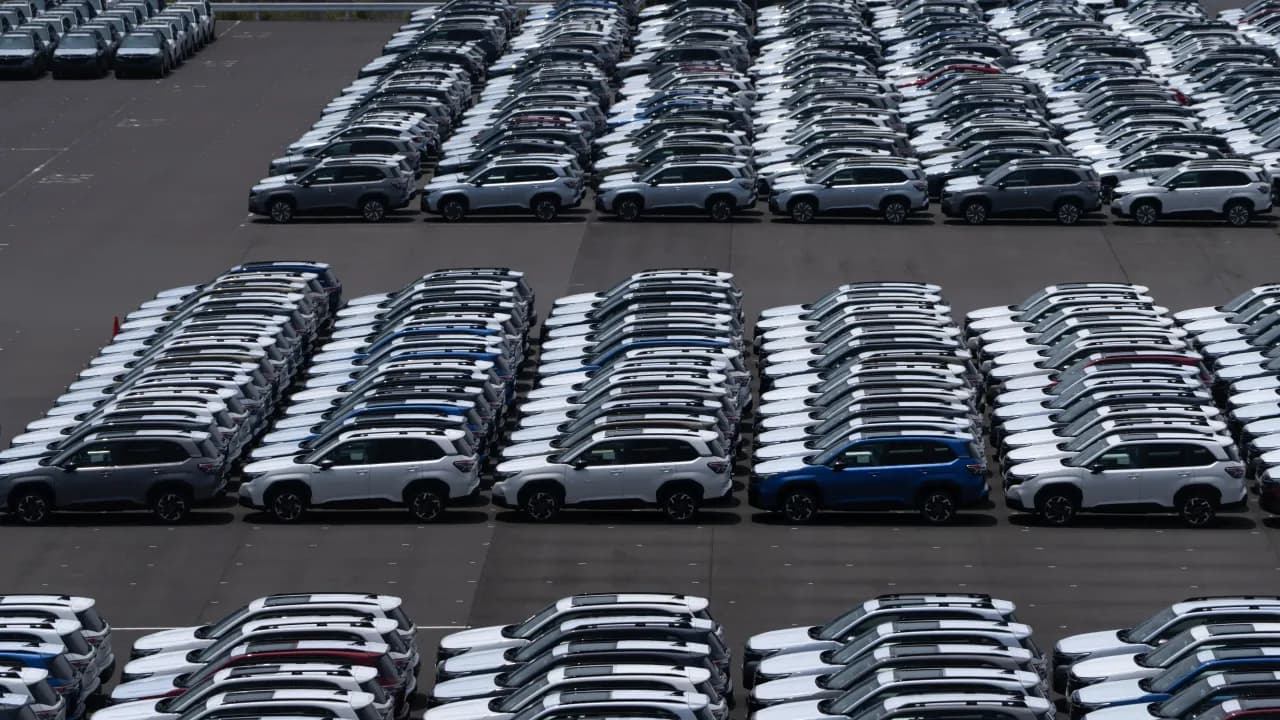India’s auto sector posted stable July sales, with two-wheelers and SUVs driving retail demand. Analysts warn that US tariffs and high dealer inventories could weigh on future growth.
India’s automobile market reported a mixed trend in July, with a minor dip in passenger vehicle sales, even as two-wheeler and three-wheeler sales rose.
A SEBI-registered analyst noted that while rural demand was sustaining the retail momentum, the threat of rising US tariffs and high dealer inventories could pose a huge hurdle unless the upcoming festive season brings some respite.
July Auto Sales: SIAM Data
Passenger vehicle wholesales in India declined 0.2% year-on-year to 3,40,772 units in July, according to data from Society of Indian Automobile Manufacturers (SIAM) on Thursday.
The overall passenger vehicle dispatches from companies to dealers stood at 3,41,510 units. Three-wheeler sales rose 17% to 69,403 units while two-wheeler wholesales increased 9% to 15,67,267 units last month, as compared with 14,41,694 units in July 2024.
“All vehicle segments posted stable performance in July 2025, though overall sentiments in the Passenger Vehicles segment have remained subdued so far, which de-grew marginally by (-) 0.2%, as compared to July of 2024, posting sales of 3.41 Lakh units in July 2025,” said Rajesh Menon, Director General, SIAM.
“With the advent of the festive season beginning with Onam festivities in the latter part of August, the Indian Auto Industry remains cautiously optimistic for the demand momentum to pick up in the coming months,” he added.
Analyst Take
India’s auto sector is navigating a challenging landscape, caught between external trade pressures and uneven domestic trends, noted SEBI-registered Cashvisory India.
On the export front, the US has slapped a steep 50% tariff on nearly half of India’s auto parts shipments, undermining competitiveness against rivals like Japan and Vietnam. This move could significantly dent export earnings and disrupt supply chains dependent on the American market,
Domestically, the passenger vehicle segment is showing mixed signals. While wholesale sales have softened, retail demand remains steady, buoyed by robust SUV sales, which now account for roughly two-thirds of the market. However, an inventory overhang of about 55 days at dealerships poses a risk to production planning, it said.
Commercial vehicles tell a slightly brighter story. Despite a dip in wholesale volumes, retail sales are rising, with the bus segment set to grow 8 – 10% in FY2026, thanks to government infrastructure projects.
Two-wheelers remain a resilient pocket of growth. Strong rural and semi-urban demand has lifted retail sales, while exports surged 34% in June 2025. This momentum can deliver 6 – 9% growth for FY2026, offering the industry a much-needed boost amid global uncertainties, it added.
Stocks Watch
The Nifty Auto Index, one of the top trending indices on Stocktwits, was marginally down at 24,106.80.
Two-wheeler giants Hero MotoCorp and Bajaj Auto were down 0.9% and 0.5%, on Friday, while Ashok Leyland (0.9%) and Royal Enfield motorcycle maker Eicher Motors (0.6%) were trading in the green. Ashok Leyland is expected to post its Q1 results today.
For updates and corrections, email newsroom[at]stocktwits[dot]com.<
